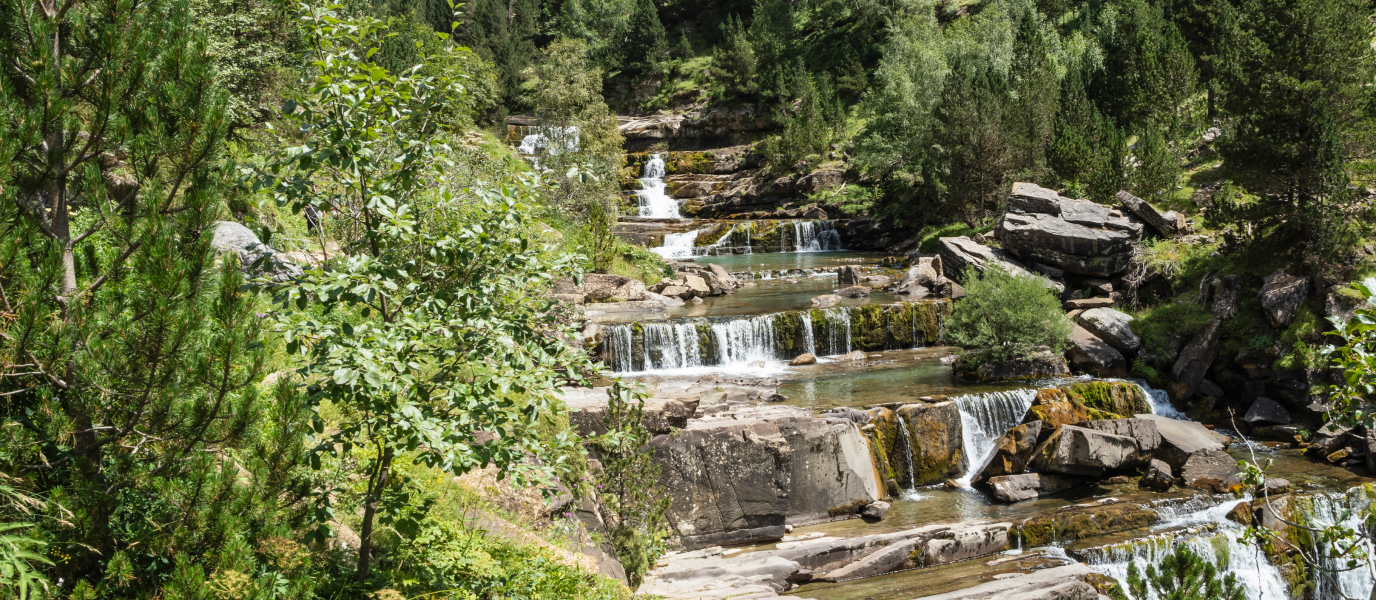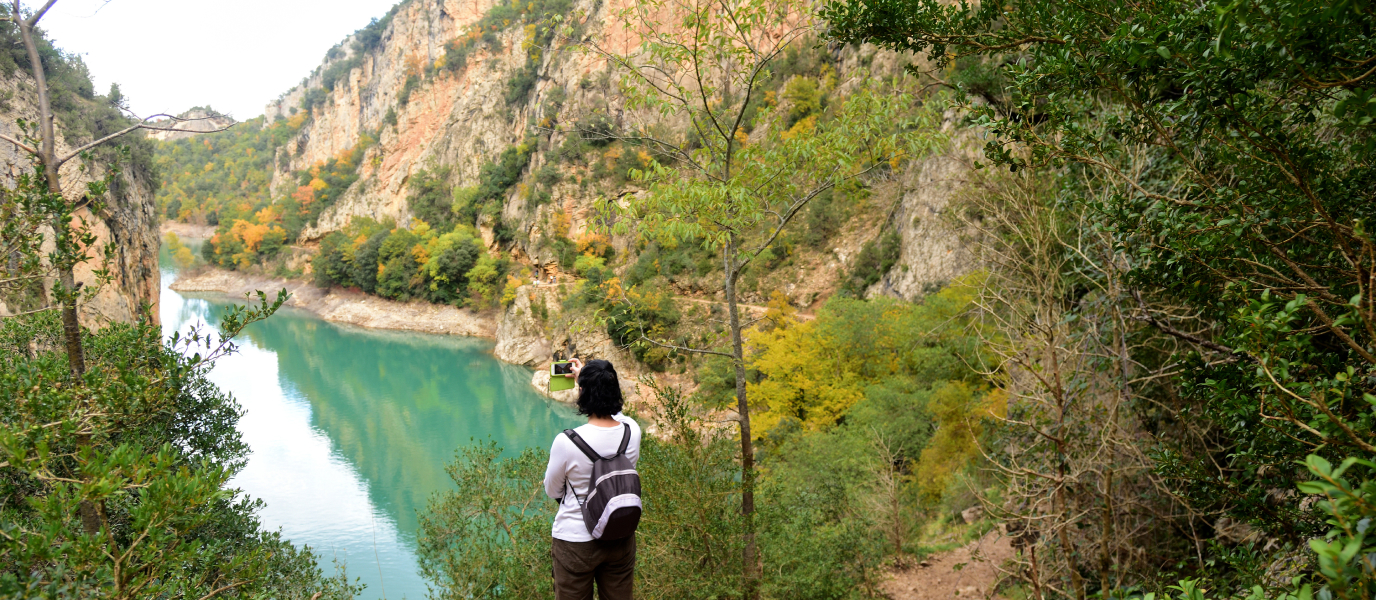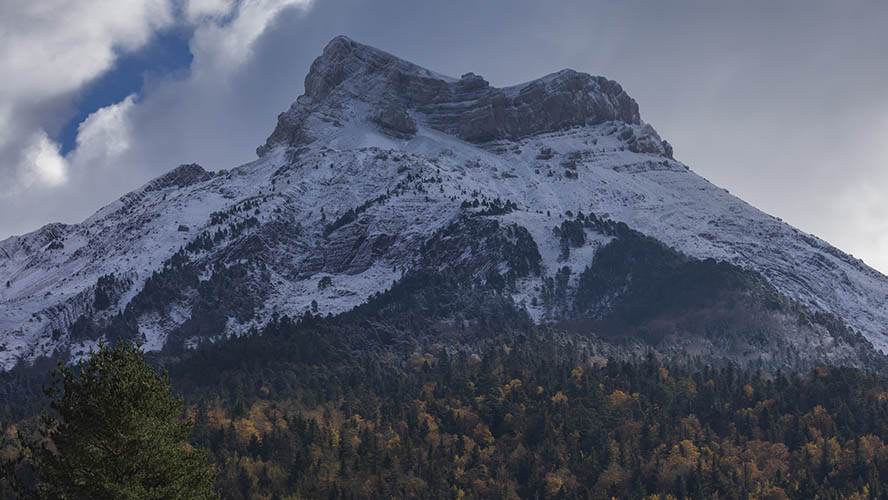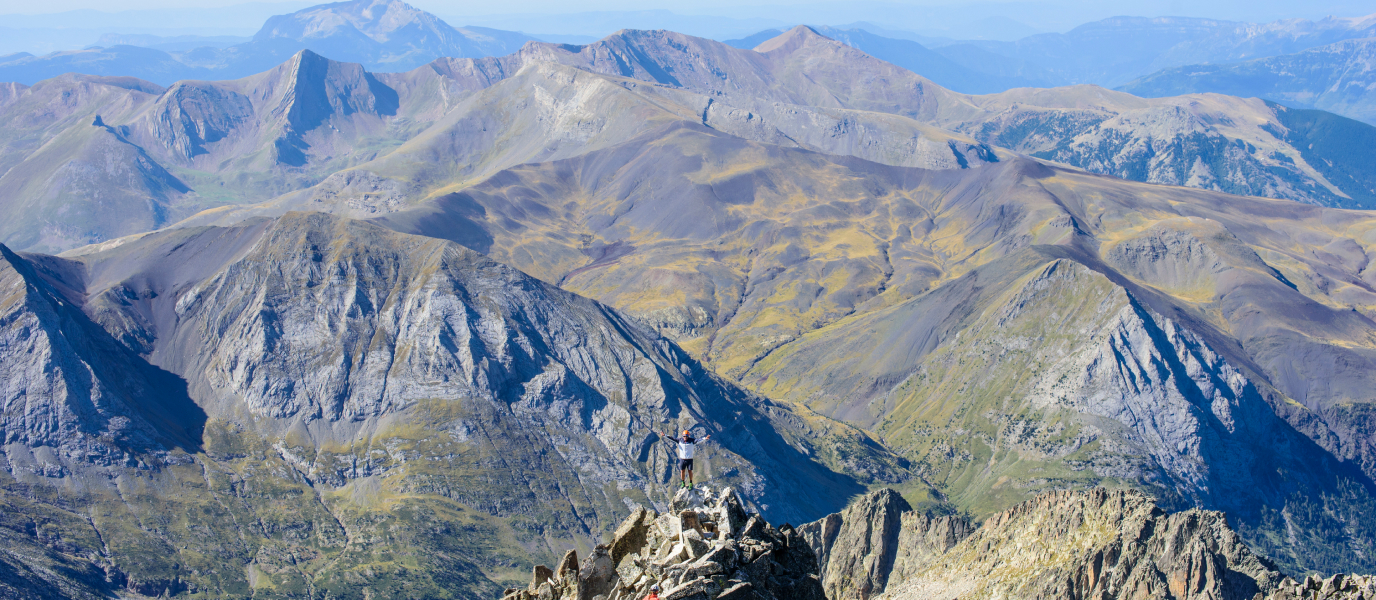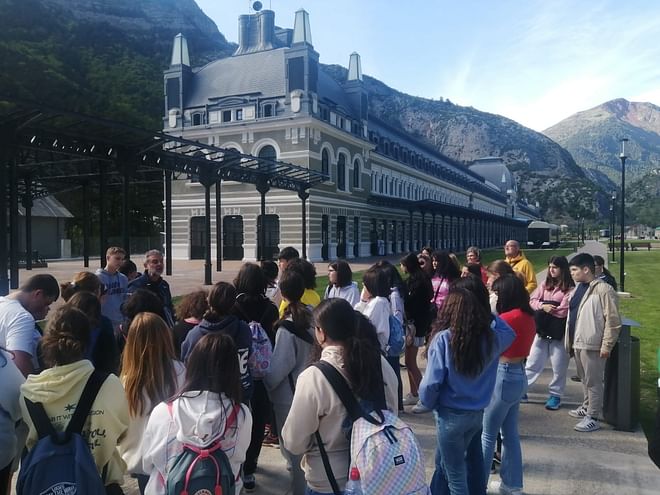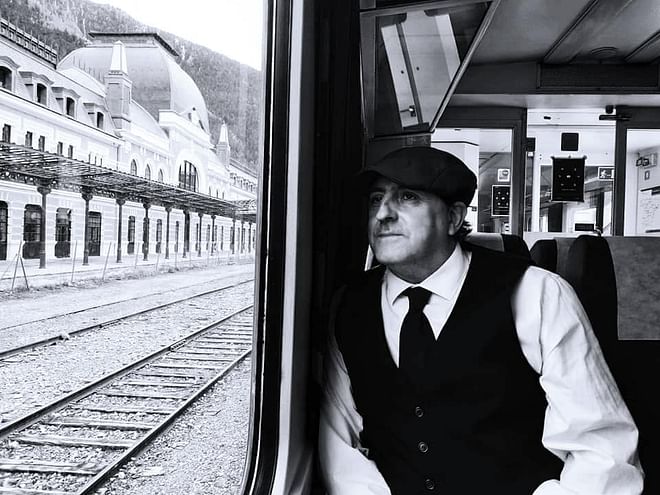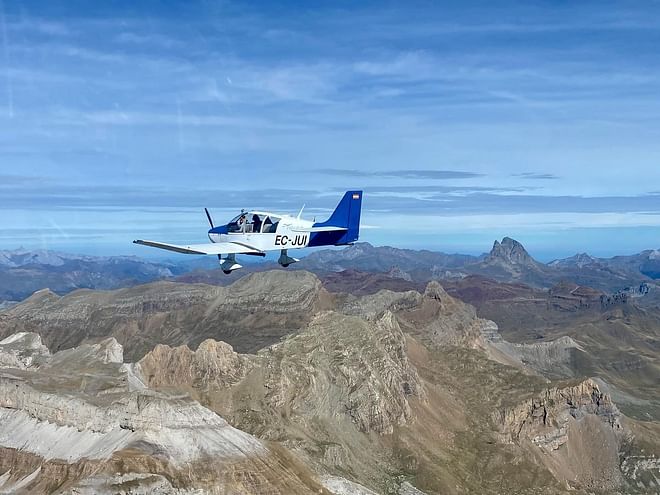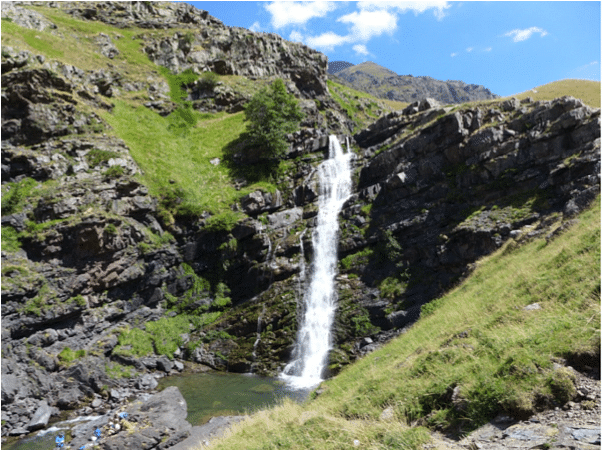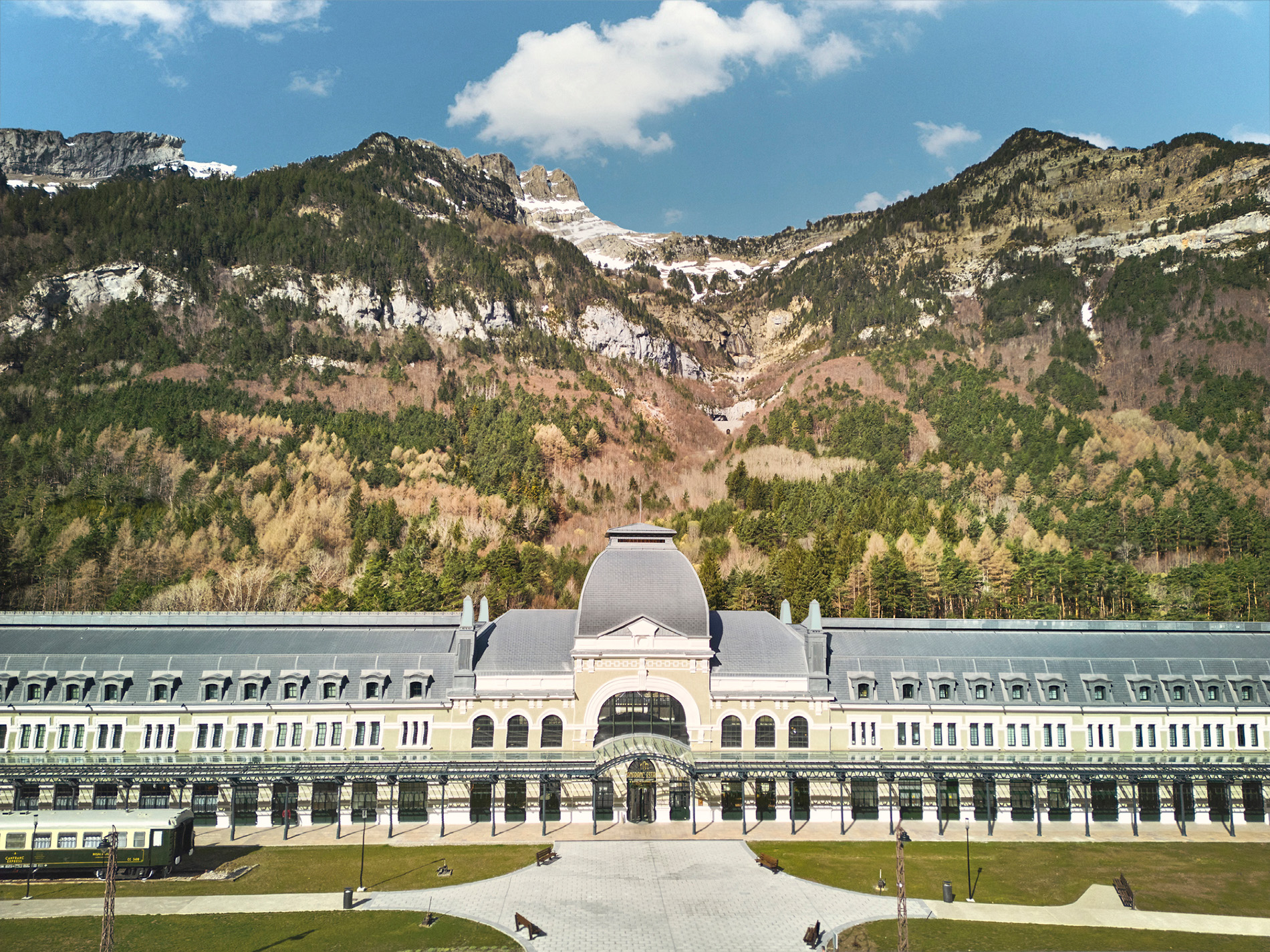Huesca’s waterfalls are a major attraction for the province. They are found in different shapes and sizes all along the Pyrenees mountain range. Some are also found in other mountains and ravines in the Huesca province.
Some of the most picturesque and well-known waterfalls are mentioned below. However, lovers of hiking and strikingly beautiful natural locations should know that there are various other waterfalls in Huesca: some of which can be accessed by all kinds of visitors, regardless of their mobility or physical condition.
The best time to visit them is spring and early summer. This is when the waterfalls are looking their best, fed by meltwater from the snow of the Pyrenees.
However, before embarking on your trip, be sure to check the weather forecast and follow the recommendations of official bodies who are responsible for their conservation. Remember that many of them are located in protected natural areas and hold special environmental value.
Sorrosal waterfall (or Broto waterfall): one of the most accessible waterfalls
This waterfall is located very close to the village of Broto (link to URL on Villages in Aragonese Pyrenees). In fact, the waterfall is so close to Broto that it can be reached by walking for 5 minutes along a gentle trail. Such is its proximity to the village, many simply refer to it as the Broto waterfall.
It is a waterfall on the Sorrosal river, which is a tributary of the Ara river. Of glacial origin, more daring visitors can attempt the via ferrata that is located next to it and admire its beauty from different heights.
An interesting fact about the Sorrosal waterfall is that, thousands of years ago, it was submerged beneath the ocean. Even today, remains of marine fossil that left their mark in the rocks can still be found in the area.
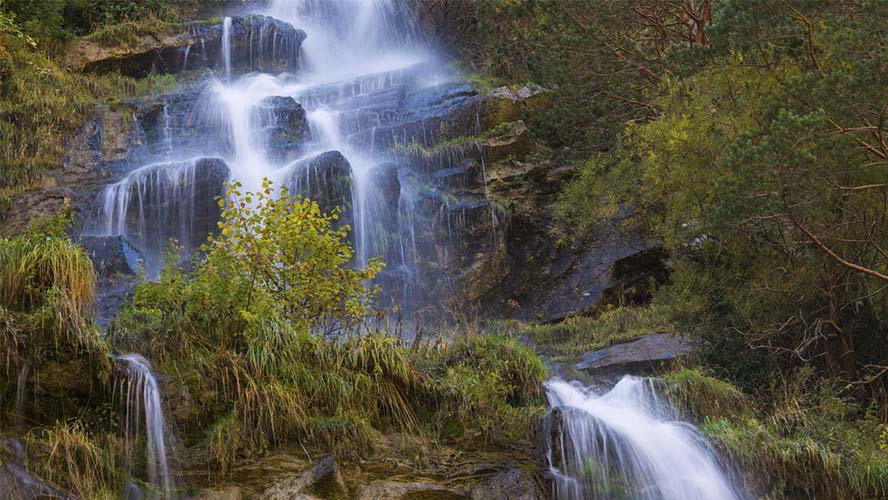
Orós Bajo waterfall: almost carved out of the rock
This waterfall in the Aragonese Pyrenees is just a 20-minute walk from the village of the same name: Orós Bajo. At the bottom of this beautiful waterfall, which is set into the rock, there is a small pool of water. When the weather is nice, this is a great place to take a refreshing dip.
Please note: visits are not recommended during the rainy season or when there are storm warning. This is because much of the trail that leads to the Orós Bajo waterfall runs parallel to the river, crossing it at various parts.
Pozan de Vero waterfall: a refreshing summer delight
This artificial waterfall was originally constructed as a weir rather than for recreational purposes. The Pozan de Vero waterfall is one of the dams that form part of the San Marcos irrigation canal, which serves to carry water to orchards in the villages of Barbastro and Castillazuelo.
Regardless of whether or not it was intentional, a marvellous bathing area has formed at the foot of the waterfall where people regularly swim in good weather. As a result, the village of Pozan de Vero can lay claim to one of the most pleasant waterfalls anywhere in Huesca.
El Chorro waterfall: nature and ethnography
Natural, spiritual and architectural elements come together in this beautiful waterfall in Huesca. The San Cornelio and La Cueva hermitages —set into the rock and part of a fascinating ethnographical complex along with other small local temples— are found close to El Chorro waterfall.
These hermitages are linked to the cult of Santa Orosia, a Bohemian princess who came to the Pyrenees to marry a Visigothic prince from the area. According to Christian tradition, the princess was beheaded by Muslim troops for refusing to enter into a relationship with their commander.
According to legend, her body was taken to Jaca Cathedral (link to the corresponding URL). However, it is believed that her head was left in the Santa Orosia hermitage, which is very close to the waterfall.
The hermitage is located just outside the village of Yebra de Basa, which marks the beginning of the trail that leads to the waterfall. This trail is around 4 kilometres long, meaning it will take roughly one hour to get there.
Ardonés waterfall: three-in-one
Fans of winter sports might be fairly familiar with this waterfall, since it is located very close to the Cerler ski resort (link to URL on Ski stations in Huesca).
In fact, leaving the road that leads to the resort, it is possible to walk to the Ardonés waterfall in just over an hour and a half. The Ardonés waterfall is actually three different waterfalls in a row, which are also referred to as the Bom waterfalls.
La Cola de Caballo waterfall: the most popular among hikers
La Cola de Caballo is, without doubt, one of the most famous waterfalls in all of Huesca. It is possible to get there via a spectacular hiking trail, which is a genuine Mecca for lovers of this outdoors activity from all around Spain. The trail begins in the Ordesa meadows and can be completed in approximately three hours.
The entire trail, from beginning to end, runs through the Ordesa y Monte Perdido National Park (link to the corresponding URL). The waterfall is the icing on the cake of a magnificent walk, flanked by other stunning waterfalls that we will mention below.
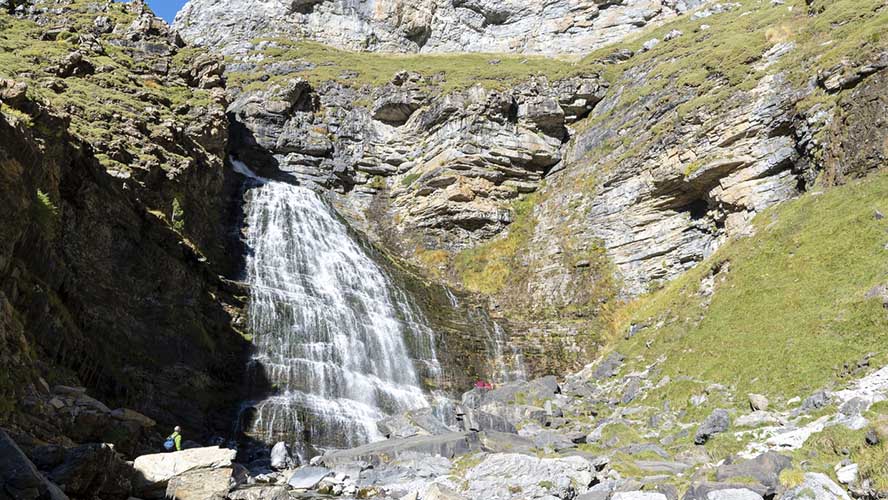
Other waterfalls in Ordesa
In the surroundings of Ordesa, on the way to the Cola de Caballo, there are other wonderful waterfalls that are notable for their amazing scenery and the delight that they bring to hikers of all ages and abilities. They are particularly popular during the summer months when the weather is very hot. All of them receive water from the Araza river:

- Arripas waterfall: lying nearby is a spring and the Bucardos viewpoint, where you can take fantastic photos of the waterfall and the beech forest in which it is located beneath the Ordesa cliffs.
- La Cueva and El Estrecho waterfalls: framed by a precipitous limestone ravine, these are two of the most spectacular places to visit in the Ordesa y Monte Perdido National Park.
- Gradas de Soaso waterfall: the name of this natural feature derives from its terrace-like distribution (with ‘Grada’ being the Spanish word for ‘terrace’), where the water ends up plunging into a backwater of the Araza river. Despite their lack of height, the Gradas de Soaso are no less striking than the other waterfalls found along the trail to the Cola de Caballo.

























































